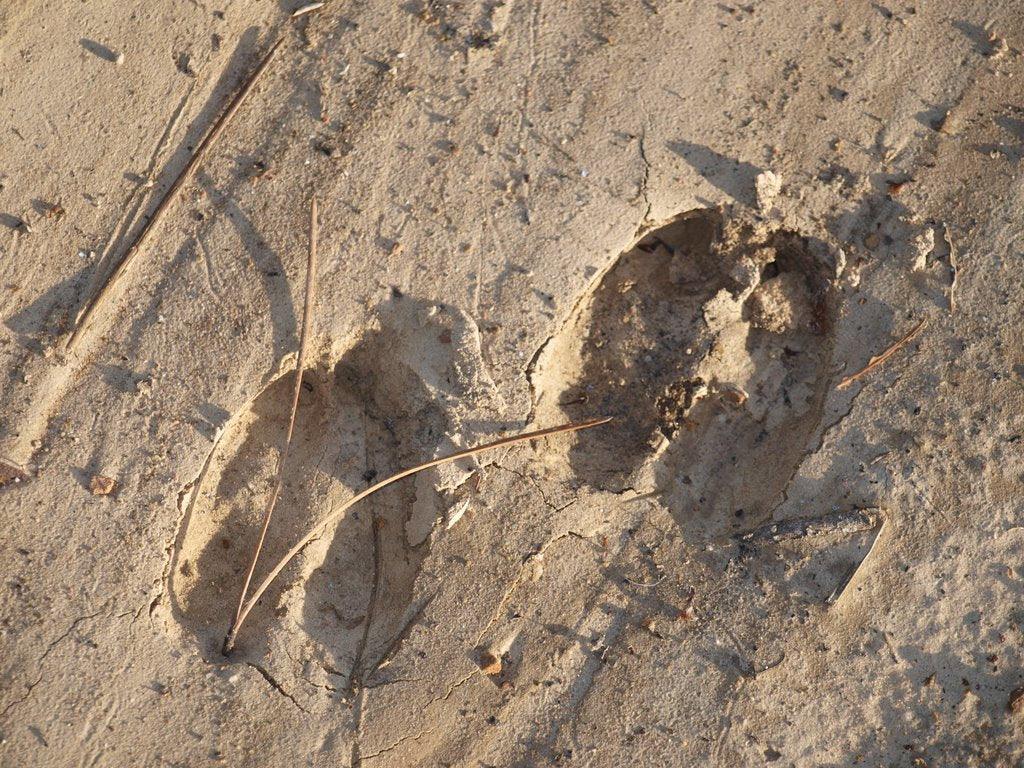Wild footprints and traces

Tracks and other traces can provide us with a lot of information about wild animals. Moreover, with the necessary knowledge (and provided that the signs are sufficiently continuous and clear), much more information can be extracted than just the identification of the species in question, such as: the sex of the animal; its state of health; its diet (and study its seasonality); establish indices of abundance and density, and even individualise a specific specimen (which can allow us to determine its home range, which areas it frequents most, its timetables, etc.). In this blog we will show you how to identify the tracks of the seven large game species of the Iberian Peninsula.
1. Wild boar
The footprint of this ungulate can measure up to eight centimetres and consists of four hooves grouped symmetrically. In front are the two main hooves, which are always marked, and the hind hooves or claws are two secondary ones. But these can vary depending on several factors:
Speed: the marking will change, as in running it is more open with the hooves separated.
Age: the first characteristic is that logically the footprint of the young boar will be smaller. In addition, it will have suffered less wear, so it is more pointed.
The main difference with other ungulates is that the marks of cervids are not joined at the base, whereas those of the wild boar are.

2. Roe deer
The footprint of a roe deer can measure a maximum of six centimetres, as it is the smallest cervid in Europe. They are very small and narrow marks in the shape of an inverted heart. If the ground is soft or wet, we can sometimes see two dots marked behind the main footprint, which is the rear hoof.
Speed: if they are very closed, it means that they are calm and more open, because they are jumping.

3. Deer
Deer tracks have a size of seven centimetres and are similar to a drop of water. In addition, if they are calm, they usually rest their hind feet in the same place as their front feet. The sole does not occupy more than a third of the sole, which is the main difference compared to fallow deer. When the rear hooves are marked on very soft ground, they are placed behind the main hooves, aligned in a rectangle, unlike the wild boar, where they are aligned in a trapezoid.
Speed: When running away, it combines galloping and jumping, in this case the secondary hooves are marked.

4. Fallow deer
These are tracks that can easily be confused with those of a young deer or doe, due to their size of seven centimetres in males and five centimetres in females. They are triangular tracks and the sole can occupy half of the hoof. Unlike deer, which do not exceed one third of the sole.

5. Ibex
Marks two seven centimetre hooves, rounded, narrower and sharper at the front than at the back. The difference with cervids is that the hoof prints are marked only on the outer edge, deer also mark the inner edge. The secondary hooves never leave any impression, as they are very high up.

6. Mouflon
The tips are set wide apart and the secondary hooves leave no mark. It is usually about five centimetres long. It is very similar to the hoof print of sheep, although they are generally more pointed. The forelegs step with open hooves and the hind feet are closed.

7.Chamois
This is a footprint that does not exceed five centimetres and has a separation between the hooves of at least one centimetre. The hind hooves only leave a mark when jumping or in the snow. In well-marked marks, the pads are clearly differentiated.


Author: María Balletbó